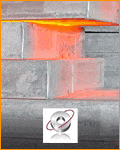History of the Jiangsu Shagang Group 
Shagang Group, a Chinese national industrial enterprise, is headquartered in Zhangjiagang City, Jiangsu Province, China. In 2022, Shagang Group produced ~41.5 million tonnes of liquid steel, ranking it the fifth largest steelmaker in the world.
The timeline below covers the history of the firm.
- 1975: Jiangsu Shagang Group Co incorporated in 1975.
- 2001: Acquisition of Thyssen Dortmund works for Euro 30m.
- 2006: Buys 90.5% of Jiangsu Huai Steel for 2 bn yuan.
- 2007: Shagang acquires 80% of Yongxing Steel Company Ltd.
- 2007: Shagang purchases 25% of Jiangsu Yonggang Group Co.
- 2007: Shagang takes control of Xinrui Special Steel Co Ltd.
- 2007: Acquires 90% stake in Australian Bulk Minerals.
- 2008: Shagang fails in bid to acquire Namisa iron ore stake in Brazil.
- 2009: Talk of Shagang's desire for overseas listing/strategic partner.
- 2012: Shagang ranks first in China's list of top non-state 500 firms.
- 2012: Talk of link-up with Baosteel to create 80 mt/yr giant.
- 2012: Signs agreement for merger with scrap supplier Fengli Group.
- 2013: Shagang sets up new international headquarters in Singapore.
- 2014: Plans issue of short term financing bond worth CNY 2 billion.
- 2015: Sell 55% stake in Shenzhen-listed Jiangsu Shagang Group Co.
- 2016: Shagang commissions first Castrip® production facility in China.
- 2018: Jiangsu Shagang ordered to review environmental performance.
- 2019: Increases ownership stake in Global Switch.
- 2020: Announces $2.25 bln Henan province consolidation drive.
- 2021: Signs digital transformation deal with Kingdee driven by carbon neutral goal.
- 2021: Purchases 1.39 million mt/day of pig iron capacity from a small local mill.
- 2022: Buys majority stake in Nanjing Iron and Steel Co (NISCO) for ~$2.11 billion.
- 2023: Abandons attempts to purchase NISCO.
- 2023: Contemplates legal action over failed Nanjing Iron & Steel equity purchase.
Notes
- 2001: Upon acquisition of the Westfalenhütten Works from ThyssenKrupp, Shagang shipped the main plant and equipment to China where it was reassembled and resumed steelmaking operations in 2004. The main plant and equipment shipped from Germany to China included a sinter plant, blast furnaces, steelmaking facilities, continuous casting machines and a hot strip mill.
- 2007: ABM is thought to have proven reserves of ~283 million tons or iron ore. The plan is for ABM to produce 2 million tons of ore annually for Shagang. [China's iron ore reserves are extremely limited, and generally not high iron content - making this a strategic acquisition].
- 2008: Trading firm Itochu of Japan in consortium with five Japanese steel producers [JFE Steel, Nippon Steel, Sumitomo Metal Industries, Kobe Steel and Nisshin Steel] and POSCO from Korea acquired the 40% stake share in Brazilian iron ore miner Nacional Minerios S.A. (NAMISA).
- 2009: Chinese government controls on private enterprises' fund-raising activities considered by many observers to limit Shagang's growth potential.
- 2012: Jiangsu-based Fengli Group is a leading Chinese scrap and iron ore trader.
- 2013: New Singapore HQ is intended to help internationalize the business and increase Shagang's steel exports to 20 percent of the company's total output, in response to the 2012 market slowdown.
- 2014: Bond to be issued on May 2014 by China Citic Bank.
- 2015: Analysts at the time suggested that the sale of Shagang's stake in the Jiangsu Shagang Group was to raise funds for the company's diversification away from steel.
- Castrip LLC announced in August 2016 that it had signed a licensing agreement for Shagang Group to use the Castrip® process in conjunction with existing steelmaking furnaces to displace less energy-efficient casting and rolling mill facilities.
- In 2017, Shagang was found to have dumped millions of tonnes of untreated waste, including slag from steel production, in landfills near the banks of the Yangtze river, contaminating nearby soil and water.
- 2018: This order from the Chinese authorities to review environmental performance was not just confined to Shagang. 16 other companies including production plants at the China Baowu Group and at HBIS Group were also given a set time to address substandard environmental and health & safety performance.
- 2019: Chinese steel maker Jiangsu Shagang Group Co Ltd in August 2019 bought a further 24% stake in Global Switch Holdings for 1.8 billion pounds ($2.21 billion), making it the largest shareholder with a 49% stake. Founded in 1998, Global Switch operates 12 data centers across Europe and Asia, including in Hong Kong and Singapore. [The strategic logic of this move is somewhat unclear to the analysts at Steelonthenet.com.
- 2020: Consolidation drive was to involve expenditure of 14.8 billion yuan ($2.25 billion) for buying up and modernising steel mills in central Henan province in a project to create a high-end manufacturing base.
- 2021: Agreement with Kindee Software Group requires, during Shagang's 14th Five-year Plan Period, that the firm fully implements ultra-low emissions, develops new ways of energy conservation and emission reduction, and achieves green and sustainable development targets.
- 2022: The announcement was made in October 2022 that, in an agreement with Fosun International, Shagang was acquiring a 60% stake in NISCO for RMB 15 billion (USD $2.1 bn). Both firms are located in Jiangsu Province. The acquisition will make Shagang the second-largest steel producer in China.
- 2023: Seemingly, Shagang's 2022 purchase from Fosun International of a 60% ownership stake in NISCO was never finalised. Instead, CITIC announced in April 2023 that it was to buy a 55% equity stake in NISCO.
Back to Knowledge Base Index

© 2001 -
2024 Steelonthenet.com. All rights reserved.
To contact us about this historic profile of Shagang Group please email info@steelonthenet.com.
To contact us about this historic profile of Shagang Group please email info@steelonthenet.com.






